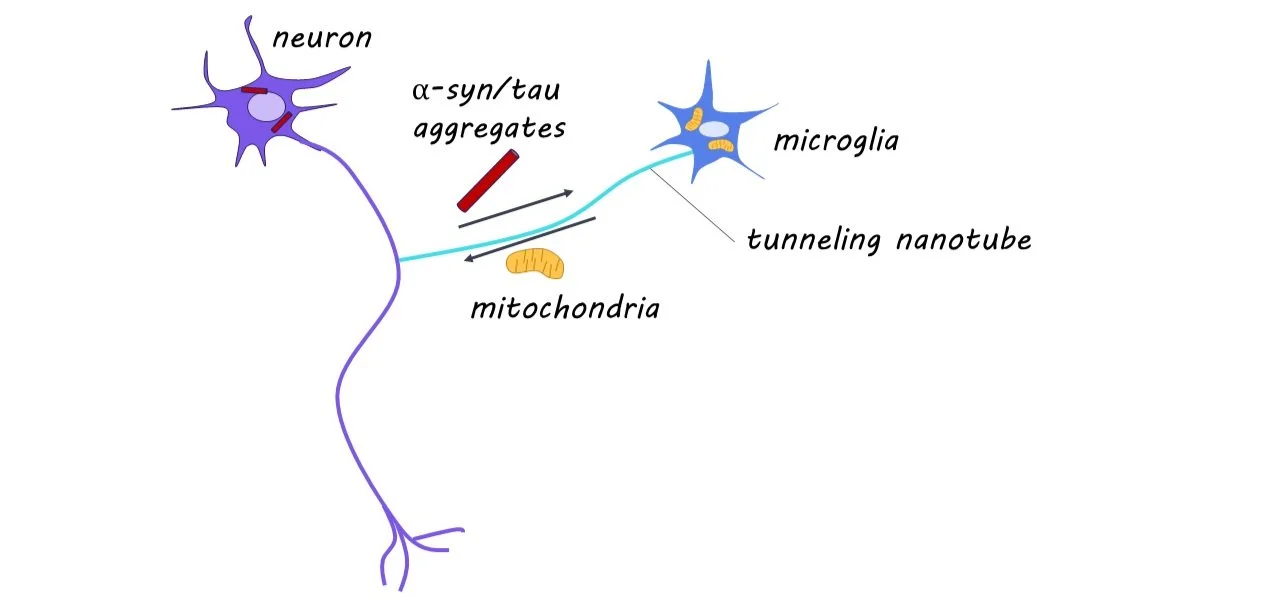Oxytocin and the Social Brain
Post by Lila Metko
The takeaway
Oxytocin has long been known as a peptide involved in promoting social interactions between individuals, in animals and humans alike. Recently, studies have pointed to the conclusion that oxytocin may not be as involved in human social interaction as was previously believed.
What is oxytocin?
Oxytocin is a neuropeptide that acts in both the central and peripheral nervous system. Before it was known for its role in social cognition, it was primarily known as a homeostatic hormone with some effects on sexual behavior. A 1991 study by Popik and Vetulani changed this view when they showed that antagonists of oxytocin receptors improved social memory while the delivery of oxytocin impaired it. Now, oxytocin is known as a major regulator of the social brain. However, the extent to which oxytocin affects different types of social interactions is not well understood. In this topic overview we explore the current literature about oxytocin and social behaviors.
How does oxytocin impact the parental bond?
Oxytocin has a strong impact on the bond between a parent and their offspring. Human mothers suffering from postpartum depression who were given oxytocin intranasally have shown greater protective responses towards their newborns than before oxytocin administration. Additionally, mothers with irregularities in the gene that codes for the oxytocin receptor have exhibited less sensitive parenting behaviors toward their children. Perhaps the most convincing piece of evidence that oxytocin plays a role in this bond is work showing that oxytocin triggers maternal behavior in rats that had never experienced a pregnancy. Interestingly, this could only occur when the rats were primed with estrogen, and the oxytocin dose was extremely high. However, a 2010 paper by MacBeth and colleagues revealed a surprising twist: mice lacking oxytocin receptors still exhibited typical maternal behavior. Further investigation by the same research group uncovered a more nuanced role for oxytocin: while these mice were indeed capable of displaying typical maternal behaviors, oxytocin's primary function appeared to be lowering the threshold at which maternal behaviors were initiated. More recent work (2022) has added another layer of complexity, demonstrating that maternal behaviors in these oxytocin receptor-deficient mice were specifically diminished after exposure to stressful environments. These findings collectively suggest that while oxytocin plays a significant role in maternal behavior, its influence is part of a more intricate and multifaceted system that regulates parental care in mammals.
How does oxytocin affect bonding in other relationships?
If the conclusions are mixed about oxytocin and the parental bond, what about oxytocin and other social contexts? Research in prairie voles, which form long-lasting partnerships with their mates, has shown that oxytocin infusions can bring about a partner preference even in the absence of mating, and that oxytocin antagonists can abolish partner preference in a mated pair. A human study by Kosfeld and colleagues showed that intranasal oxytocin was able to increase trust in a randomly selected ‘trust game’ partner. However, recently it was found that attempts to replicate the Kosfeld study were unsuccessful. In conclusion, while oxytocin may establish partner preference in the highly social species of prairie voles, it has not yet been shown to translate to human concepts like trust.
Oxytocin can also impact social cognition — mental actions such as thinking, learning about, or understanding a social interaction. Mice genetically lacking oxytocin have no social memory (could not distinguish familiar and novel mice) but when given oxytocin, social memory was restored. It was later shown that this action occurred through receptors in the amygdala, a brain region involved in emotional memory. Some research in humans suggests that there are sex differences in the effects of oxytocin on social cognition and behavior and that these effects are context-dependent. For example, evidence suggests that the 'prosocial' effects of oxytocin are more prominent in males.
How does oxytocin affect mood?
Interestingly, oxytocin can affect more than just social behaviors, but also social-related phenomena like emotions. In a study of 37 healthy men put into a stressful situation (a mock job interview), it was shown that intranasal oxytocin had anxiety-relieving effects. In a mouse model of hormone-induced postpartum depression, it was found that oxytocin receptor levels were low in certain brain regions. Additionally, intranasal oxytocin can affect the mood of women with postpartum depression, although how it affects mood is unclear. Some studies show that oxytocin improves mood in postpartum women, while another study showed that oxytocin exacerbated depressive symptoms.
What can we conclude from these findings?
In the current literature on oxytocin’s impact on the social brain, there is a large amount of variation in outcomes. However, it is clear that oxytocin affects social pathways in the brains of both humans and animals. The extent to which these animal studies can translate to humans needs to be explored further.
We are undeniably a social society, and social interactions make up a large part of many people’s daily lives. Additionally, the symptom profiles of multiple mental health disorders, such as schizophrenia and autism spectrum disorder, include deficits in social cognition. Therefore, from a treatment-focused perspective, understanding the role of oxytocin and its impact on social behavior is crucial.
References +
Leng, G., Leng, R. I., & Ludwig, M. (2022). Oxytocin-a social peptide? Deconstructing the evidence. Philosophical transactions of the Royal Society of London. Series B, Biological sciences, 377(1858), 20210055. https://doi.org/10.1098/rstb.2021.0055
Popik, P., & Vetulani, J. (1991). Opposite action of oxytocin and its peptide antagonists on social memory in rats. Neuropeptides, 18(1), 23–27. https://doi.org/10.1016/0143-4179(91)90159-g
Zhu, J., Jin, J., & Tang, J. (2023). Oxytocin and Women Postpartum Depression: A Systematic Review of Randomized Controlled Trials. Neuropsychiatric disease and treatment, 19, 939–947. https://doi.org/10.2147/NDT.S393499
Bakermans-Kranenburg, M. J., & van Ijzendoorn, M. H. (2008). Oxytocin receptor (OXTR) and serotonin transporter (5-HTT) genes associated with observed parenting. Social cognitive and affective neuroscience, 3(2), 128–134. https://doi.org/10.1093/scan/nsn004
Macbeth, A. H., Stepp, J. E., Lee, H.-J., Young, W. S. III, & Caldwell, H. K. (2010). Normal maternal behavior, but increased pup mortality, in conditional oxytocin receptor knockout females. Behavioral Neuroscience, 124(5), 677–685. https://doi.org/10.1037/a0020799
Rich, M. E., deCardenas, E. J., Lee, H., & Caldwell, H. K. (2014). Impairments in the Initiation of Maternal Behavior in Oxytocin Receptor Knockout Mice. Plus ONE. 9(6), e99839. https://doi:10.1371/journal.pone.0098839
Tsuneoka, Y., Yoshihara, C., Ohnishi, R., Yoshida, S., Miyazawa, E., Yamada, M., Horiguchi, K., Young, W.S., Nishimori, K., Kato, T., Kuroda, K.O. (2022). Oxytocin Facilitates Allomaternal Behavior under Stress in Laboratory Mice. eNeuro, 9(1), 0405-21. https://doi: 10.1523/ENEURO.0405-21.2022
Kosfeld, M., Heinrichs, M., Zak, P. J., Fischbacher, U., & Fehr, E. (2005). Oxytocin increases trust in humans. Nature, 435 (7042), 673–676. https://doi.org/10.1038/nature03701
Heinrichs, M., Baumgartner, T., Kirschbaum, C., & Ehlert, U. (2003). Social support and oxytocin interact to suppress cortisol and subjective responses to psychosocial stress. Biological psychiatry, 54(12), 1389–1398. https://doi.org/10.1016/s0006-3223(03)00465-7
Zhu, J., & Tang, J. (2020). LncRNA Gm14205 induces astrocytic NLRP3 inflammasome activation via inhibiting oxytocin receptor in postpartum depression. Bioscience reports, 40(8), BSR20200672. https://doi.org/10.1042/BSR20200672

